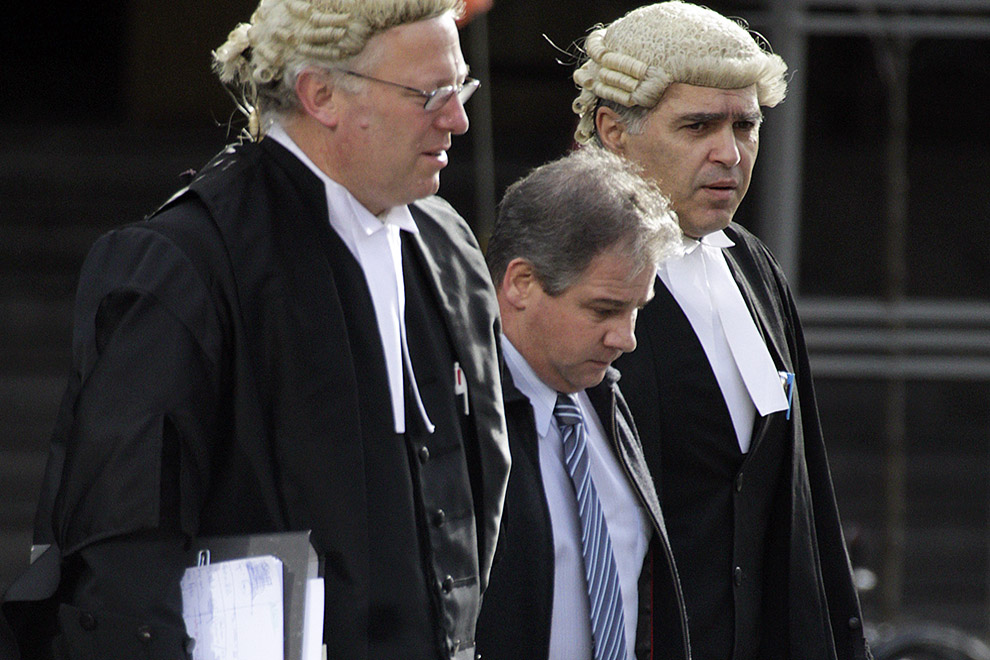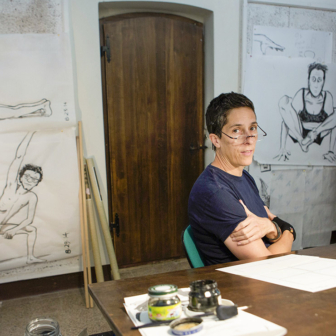This House of Grief: The Story of a Murder Trial
By Helen Garner | Text Publishing | $32.99
Many of us prefer not to think too much about the deaths of three little brothers on Father’s Day 2005 after their father drove them into a dam outside the small town of Winchelsea in Victoria. The pain of the family, and of the community, can seem too much to contemplate. Over the years of the father’s trials for murder it was difficult to avoid gaining some knowledge of the circumstances, and most people have an opinion on the case. Could it possibly have been accidental? And if it were deliberate, how could such a mild, loving father act in this way? As an accident, it was tragic; as an act of intent, it was unthinkable.
Despite the initial support of the children’s mother and most of Winchelsea, the father, Robert Farquharson, was convicted of murder at his first trial. Even after a second trial and failed appeals, people were still arguing about his guilt or innocence. In 2011 the ABC’s Australian Story presented the view of Farquharson’s family and friends that an innocent man had been imprisoned. Last year, Megan Norris published the mother’s version of events with a title that leaves no doubt about its contrary perspective, On Father’s Day: Cindy Gambino’s Shattering Account of Her Children’s Revenge Murders.
Helen Garner followed the case from the first committal hearing, when Farquharson politely held the door of the courtroom open for her. Two years later, she attended the seven weeks of tedious technical evidence and the heart-stopping statements at the first trial; three years on, she was at the appeal retrial; and she stuck it out through a Supreme Court appeal eighteen months later, and then for the thirty minutes it took the High Court to reject an application for a final appeal in 2013. She forced herself to observe and record every detail of these trials over the years – a commitment that raises the question, what is to be gained from this intent raking over of the horror? This House of Grief answers that question with a vivid inquiry into the operations of our justice system, an acute study of human psychology and the language that can become self-mythology, and an account, almost in passing, of the way communal ethics are shared across classes in Australia.
Garner treats the courtroom as the arena where justice is performed in our society, and she watches with the attention of a perceptive theatre critic, noting every gesture, every shift of voice or wandering gaze, every evasive phrase. She has done this before – in Joe Cinque’s Consolation – but there her interest was in the spiritual dimension of justice, in the gap between legal and moral rights, and in the failure of public justice to provide any psychological restitution for the loss of life. In this case, she positions herself in the courtroom from the start, trying to see what jurors learn and to understand their responses. She takes us into the “beautiful” Supreme Court of Victoria with its “soaring ceiling, pale plaster walls, and fittings of dark, ponderous timber,” she gives us brief character studies of the barristers and judge, and she turns the evidence into a narrative stripped of the tedium of the court experience.
For days, Farquharson’s barrister batters away at the technical evidence and the police failures in marking out the tyre tracks. Experts dispute the probability of “cough syncope,” a condition that can lead to a loss of consciousness after coughing. There are arguments about the camber of the road. With their learning and experience of the system, the judge and the barristers orchestrate events, drawing the admiration and trust of the newcomers to Australian state justice. An artificial process makes order from the messy, disordered human lives that come to its attention.
Of course, Garner adds another layer of order – her own sensitivity to language and gesture, and her recognition of the individual humanity of the gowned barristers, the judge and the jurors locked up with their responsibility. She imagines the life of the defendant, turned out of his home by his wife to spend his nights with his father after days working at a dreary cleaning job. As the wife takes up with her new partner, a concreter, she speculates about the glamour to a housebound mother of a concrete pour on the new house, and she watches the terrible grief of the family as the technical experts speculate on the nature of the children’s last minutes.
The evidence is so harrowing that the reader may wish to join Garner in the restorative martini or gin that she drinks with friends at the end of the worst days. From time to time, she dreams a redemptive fantasy in which the little boys come back to life. “Was there a form of madness called court fatigue?” she wonders, revealing “the crazy magical thinking that filled my waking mind, and, at night, my dreams: if only Farquharson could be found not guilty, then the boys would not be dead.” The children’s parents and most people in the courtroom seem to think the same way.
A criminal court is one of the rare places in Australia where an educated class of professionals engages with poorer people in a struggle to find a shared ethics and morality. The judges and barristers here are acknowledged as clever, even brilliant, while many of the rural people who give evidence are inarticulate and financially burdened. The unknowable jurors strike Garner as ordinary people, struggling to pay attention in their casual clothes. She shows an acute sensitivity to class, enjoying the “democratic counter” at the coffee cart outside the court, where even the occasional judge stops by for a takeaway.
Inside the court the eminent professor who has never seen a “cough syncope” case suffers by comparison with the doctor from Geelong steadily compiling a list of cases. The police expert who appears with a giant protractor and calculator draws a wry “I hate a bloke who thinks he knows his job” from the children’s grandfather. Garner gently mocks the absurdity of expert jargon as a counsellor talks about the “the parental dyad” and “suicidal ideation” but, more significantly, she picks up the phrases that the participants cling to as explanations for their lives. Cindy Gambino repeats the mantra that she “loved” her husband but was not “in love” with him; Farquharson clutches at stock phrases: “I loved them more than life itself,” “I was a very loving father.” Garner shrewdly notes the recurrence of “the sentimental fantasy of love as a condition of simple benevolence, a tranquil, sunlit region in which we are safe from our destructive urges.”
Garner watches the jurors flag under the weight of detail, then notes how they come to attention when a witness invites their sympathy or appeals to their sense of humour. A rattled policeman comments on the excellence of his colleague’s photographs and the court laughs, partly in sympathy for the pasting he is suffering from the defence barrister. Our knowledge of events must always be incomplete, but Garner concludes that we are more likely to rely on our understanding of human behaviour than trust in science. She quotes Janet Malcolm: “Jurors sit there presumably weighing evidence but in actuality they are studying character.”
In this account, Farquharson becomes responsible for his own conviction. He claims his right to silence in the first trial, but the recorded statements he made to the police in the days after the deaths, with their anxious grasping at excuses and lack of concern for the boys, prove devastating. When he takes the stand in the second trial he can add no details about the events of the night, and claims his bereavement as an unassailable excuse for his lack of recall. As Garner puts it, “the final fortnight of evidence was like watching, in ghastly slow motion, a man slither down the face of a cliff. Sometimes his shirt would snag on a protruding branch, or his fall would be arrested by a tiny ledge, a fragile outcrop; but the fabric would stretch and snap, the narrow shelf would crumble, and down he would go again, feet first, eyes wide open, arms outstretched into the void.”
Farquharson seems to lack any imagination or powers of empathy, let alone any language skill. These are the very qualities Garner brings to the matter, enriching his miserable actions and failures with an understanding that encompasses not only the horrors of this case but also its effect on the psyche of all of us who know about it. It is as if she is trying to fill the terrible absence there. Yet she writes with restraint and tact, managing to avoid what she calls “the tabloid language that can reduce the purest human anguish to a pulp.” There are no photographs in her book, though the newspapers have been publishing one of the three boys sitting on a couch that shows them to be as appealing as anyone’s young children.
Occasionally I meet women who refuse to read Helen Garner’s books since The First Stone, or who read all her subsequent work through its prism – as if, once they’ve categorised her as a traitor to feminism, she can have nothing worth hearing to say. In the context of recent prominent sexual harassment and offence trials, The First Stone deserves rereading for its concern about the incompetent way our institutions handle such matters, and the difficulty of finding just penalties for the perpetrators. Joe Cinque’s Consolation looked more closely at the spiritual damage of crime, and the failure of the legal system to provide any emotional or psychological restitution, but it also noted the effects of the defendant’s silence in court and the absence of a jury.
Here, Garner offers a more positive view of the courts. Lex Lasry, the defending barrister who delivered the most devastating line in the Cinque book (“Duty of care and duty to act are not the same thing”), appears as the scrupulous and sensitive judge in the appeal trial. The barristers battle on through every detail to the point of tedium. The police hold the line against determined attack. The witnesses struggle with the awful burden of their knowledge, and the jury reveals itself capable of making decisions independently of the opinions of the public and journalists in the courtroom.
In the closing pages, Garner insists that the fate of the Farquharson children is a legitimate concern for all of us. The court has been the place where that concern springs into action, and This House of Grief leaves us with the slight hope that our justice system can maintain some of our shared sense of humanity. •




